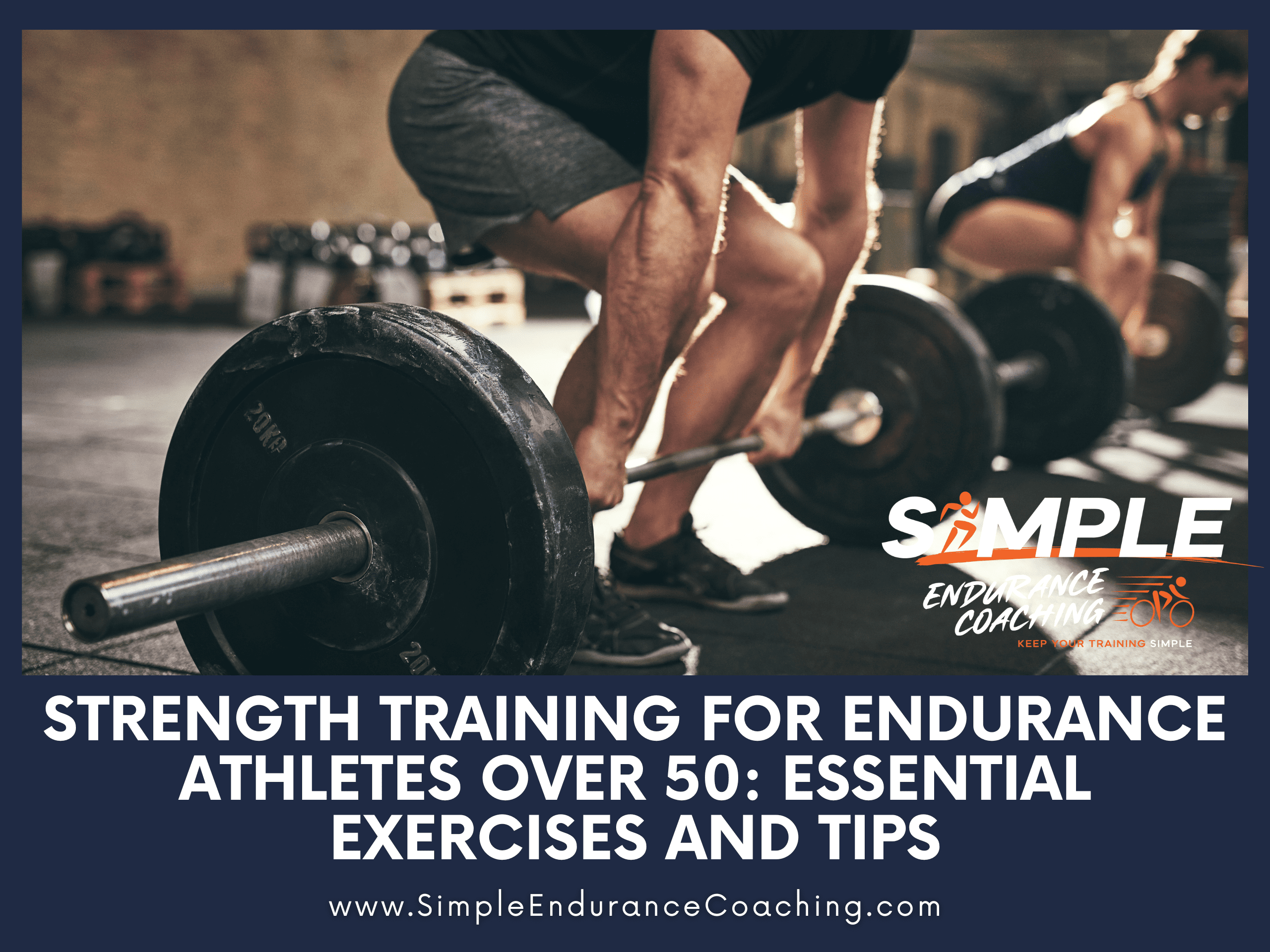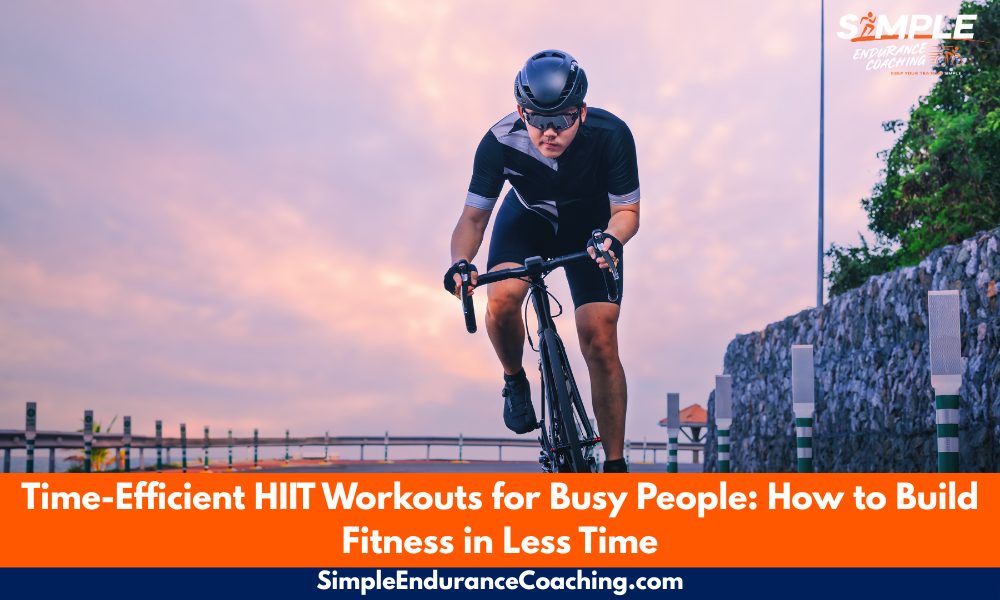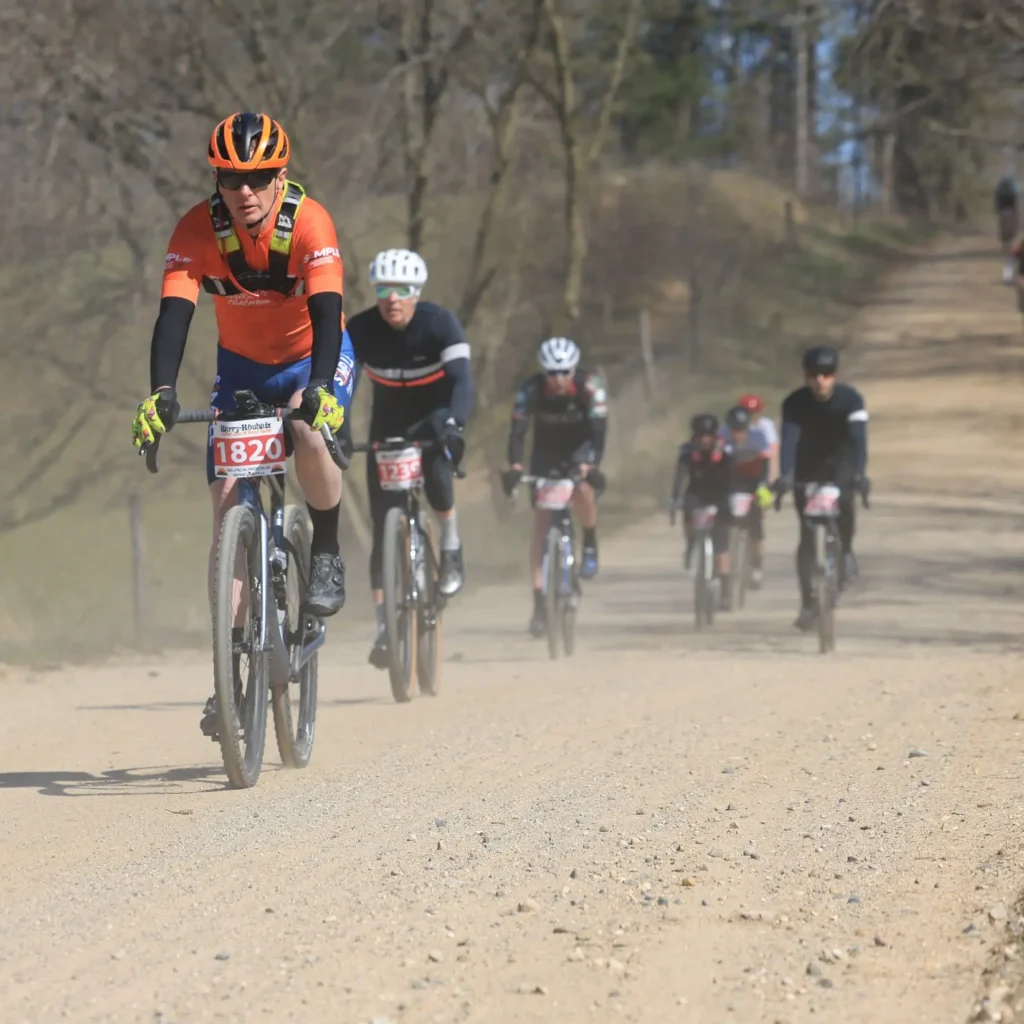Strength Training for Endurance Athletes Over 50: Essential Exercises and Tips
As endurance athletes over 50, integrating strength training into your routine is not just beneficial – it’s essential to your resiliency and durability.
The combination of endurance and strength training enhances overall performance, aids in injury prevention, and ensures a healthier aging process.
In this post, we’ll explore some key aspects of strength training for endurance athletes over 50, focusing on effective exercises and practical tips.
Whether you’re training for gravel racing, cyclocross, or trail running, weight training gives you the strength and stability you need to excel.

Understanding the importance of strength training over 50
As we age, we experience a natural decline in muscle mass and bone density.
For endurance athletes, this can mean decreased performance and a higher risk of injuries.
Strength training counteracts these age-related changes, helping to maintain muscle mass, improve bone density, and enhance joint stability.
You can periodize your strength training so you’re doing more in the base season and less during the race season.
Key exercises for athletes over 50
- Front Squats: A fundamental exercise that targets the lower body, squats are crucial for building leg strength and improving core stability. They help in enhancing your running, cycling, or swimming efficiency.
- Deadlifts: Ideal for improving overall strength, deadlifts engage multiple muscle groups, including your back, glutes, and hamstrings. This exercise is pivotal in developing a strong foundation for endurance activities. In my eyes, deadlifts are the best overall strength training exercise for athletes over 50.
- Side Lunges: Side lunges are excellent for targeting each leg individually, which helps in correcting muscle imbalances. They also improve balance and coordination.
- Push-Ups: A versatile upper body exercise, push-ups help strengthen the chest, shoulders, and triceps, which are essential for activities like swimming and cycling.
- Rows: Bend over and pick up a dumbbell or use a seated machine to pull a weight into your armpit area to develop back strength and stability.
- Plank variations: Core strength is vital for any athlete. Planks and their variations, especially plank rotations (elbow plank to side plank and back) help build a strong core, which is fundamental for maintaining good form during endurance activities.
Strength training tips for endurance athletes over 50
- Start slowly: If you’re new to strength training, start with lighter weights and focus on proper form. Gradually increase the intensity as your body adapts.
- Consistency is key: Aim for at least two strength training sessions per week, three if you’re serious about getting stronger. Consistency helps in achieving significant improvements in strength and endurance.
- Balance your training: It’s important to balance your strength training with your endurance activities. Overtraining can lead to fatigue and injuries. Know that you won’t bulk out like a bodybuilder because that’s not how we’re training! Plus, your body generally allows you to build endurance or size, not both. You can, though, get a lot stronger.
- Listen to your body: Pay attention to how your body responds. Rest and recovery are as important as the training itself, especially for athletes over 50. Getting enough protein, particularly after a workout, is a key element of recovery. Yoga classes are also a good tool for recovery.
- Seek professional advice: Consider working with a fitness professional who can tailor a strength training program to your specific needs as an endurance athlete over 50. As a certified personal trainer, I can help you craft a program that fits your preferences and schedule.
- Do your HIIT training before strength: Generally, I recommend that my athletes do their intervals before strength training but do them both on the same day to make for a hard day.
Strength training improves performance and fitness
Strength training for endurance athletes over 50 is not just about maintaining performance: it’s about enhancing it while promoting a healthy aging process.
By incorporating these exercises and tips into your routine, you can enjoy the benefits of a well-rounded, age-appropriate fitness regimen.
Use strength training as a key component of your endurance training and experience the positive changes it brings to your athletic performance and overall well-being.
Don’t forget to share your experiences and tips in the comments!
Let’s inspire each other to become stronger, fitter, and ever-more-resilient endurance athletes in our 50s and beyond.
Three things everyday endurance athletes over 50 should know about strength training
- Strength training improves performance through improved endurance, better mobility, and general full-body strength.
- Start slow and light. Take your time building up your weight.
- Be consistent in your strength training: Lift two or three days a week, every week.
Need more?
GET A FREE Core Strength and Stability training video when you opt-in to receive my weekly blog posts about what works in endurance sports.
SIGN UP FOR A Virtual Coffee so we can discuss your goals, ask questions, and talk about making your endurance training more effective, fun, and Simple.
Paul Warloski is a:
- USA Cycling Level 2 Coach
- RRCA Running Coach
- Training Peaks Level 2 Coach
- RYT-200 Yoga Instructor
- Certified Personal Trainer





5 Responses
☕️ Good morning Paul.
Any recommendation for a food guide/book, in reference to your article concerning protein, carb and fat balance.
Thnx Paul
Hi Terry, thanks for the question! The Feed Zone by Allen Lim is one of the better cookbooks out there, if that’s what you’re looking for. Anything by Louise Burke, including Food for Sports Performance is outstanding.
The other mainstay book is the Real Meal Revolution. That describes the process of eating a low-carb, high-fat diet that has been pretty amazing so far.
Coach Paul – I’m a 57yo male and into long bike packing adventures and now long MTB endurance events. I engaged a personal trainer and have been in the gym 3d/w since Nov, over 5 months. I followed the principles you outlined above closely. I progressed slowly and had zero injuries. I’m stronger, more limber, my form on the bike is way better, and I don’t have body pain on long 3h+ rides.
My back feels as good as it has in 20yrs.
I would add that mobility/yoga/stretching are as critical as the strength training.
I highly recommend these principles!
That’s amazing, Dan! It was a great idea to get a trainer to make sure you do the exercises with good form. And I’m glad to hear so much is going well on your long rides.
What’s your next bike packing adventures?